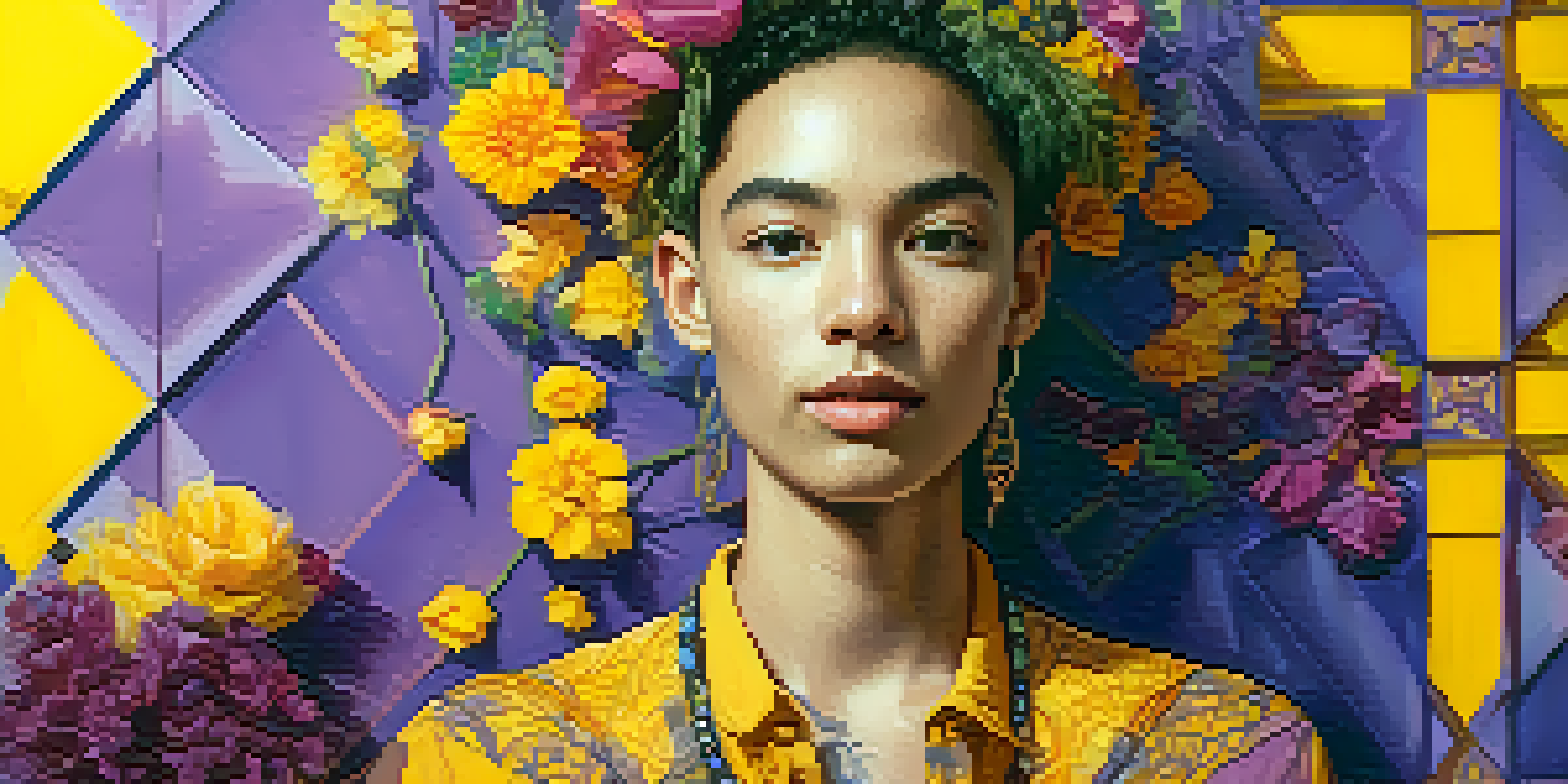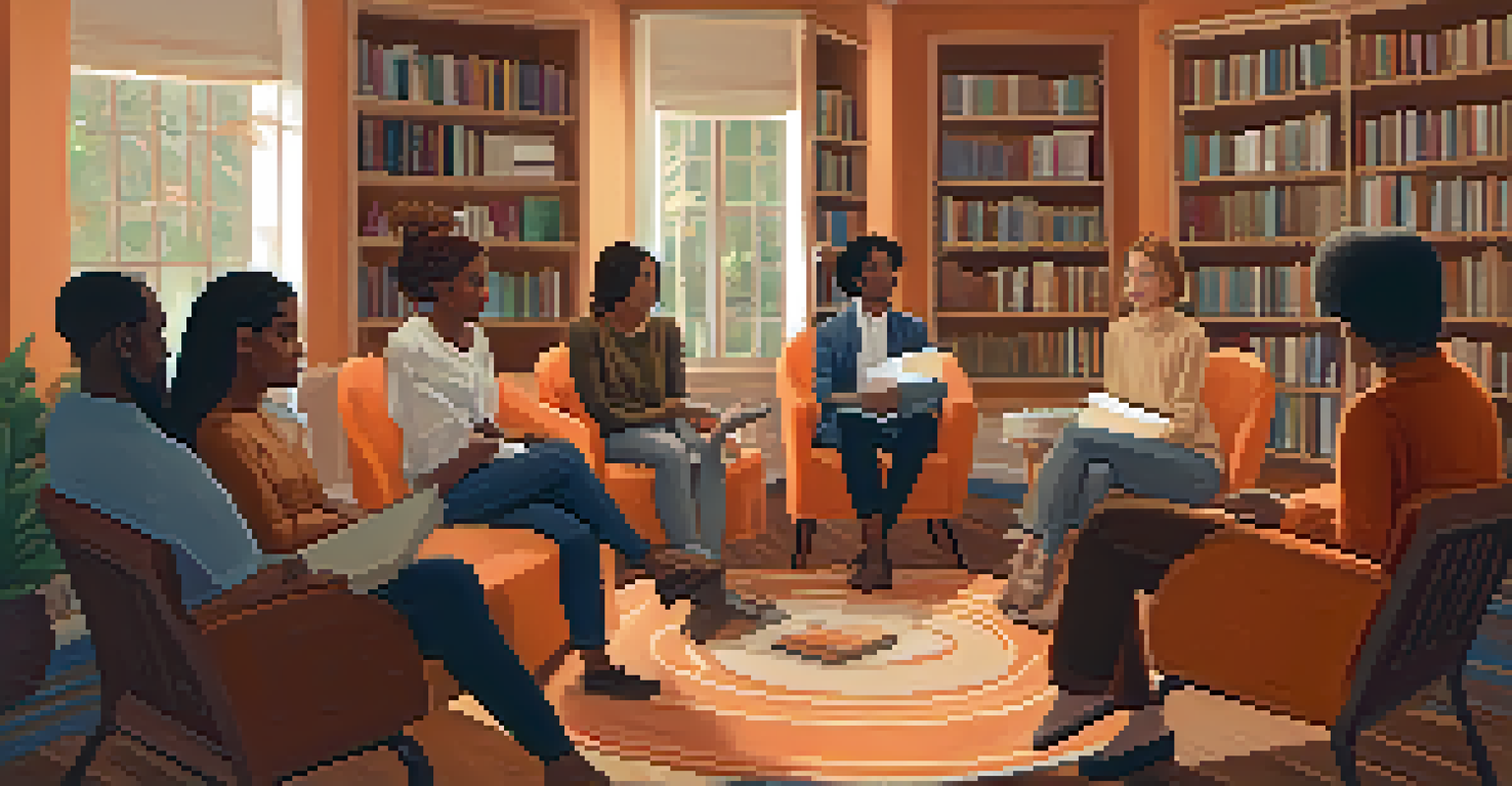Gender Identity and Artistic Expression: A Deep Dive

Understanding Gender Identity: A Brief Overview
Gender identity refers to how individuals perceive themselves and what they call themselves. This understanding can align with the sex assigned at birth or differ significantly. It is a deeply personal experience that encompasses a range of identities beyond just male or female, including non-binary, genderqueer, and more.
Art is not a mirror held up to reality, but a hammer with which to shape it.
Art has always played a crucial role in expressing complex human experiences, and gender identity is no exception. Through various artistic mediums, individuals can explore and communicate their feelings about their gender. This creative expression can serve as a powerful tool for both personal exploration and societal commentary.
Moreover, as society becomes more aware and accepting of diverse gender identities, art continues to evolve. Artists are increasingly using their platforms to challenge traditional gender norms and advocate for inclusivity. This shift not only enriches the art world but also fosters a deeper understanding of gender diversity among audiences.
The Role of Visual Arts in Gender Identity Expression
Visual arts, including painting, photography, and sculpture, offer unique avenues for artists to convey their gender identity. For instance, a portrait can express the artist's internal struggle or celebration regarding their gender experience. This form of expression often resonates deeply with viewers who may see reflections of their own stories.

Many contemporary artists use mixed media to blur the lines of traditional gender representation. By incorporating various materials and techniques, they challenge conventional expectations of how gender is portrayed. This can create a more inclusive narrative that embraces fluidity and complexity.
Art Reflects Gender Identity Diversity
Art serves as a powerful medium for individuals to explore and express their diverse gender identities, fostering understanding and inclusivity.
Exhibitions focused on gender identity have gained popularity, allowing artists to showcase their work in a supportive environment. These platforms not only validate the experiences of marginalized communities but also invite dialogue and understanding among wider audiences. The impact is profound, as viewers engage with art that reflects their own identities or challenges their preconceived notions.
Performance Art: A Dynamic Exploration of Gender
Performance art is another vibrant medium through which artists explore gender identity. This form allows for real-time expression and often incorporates elements of theater, dance, and even activism. Artists can portray their experiences in a visceral way that engages the audience on multiple levels.
The artist's job is not to succumb to despair but to find an antidote for the emptiness of existence.
For example, many performance artists use their bodies as canvases to challenge societal expectations. Through costume changes, movement, and narrative, they can present a fluid understanding of gender that defies rigid definitions. This can create a powerful emotional connection with the audience, prompting them to reflect on their perceptions of gender.
The interactive nature of performance art also encourages audience participation, blurring the lines between artist and viewer. This engagement fosters a shared experience that can lead to greater empathy and understanding. By witnessing these performances, audiences are often inspired to confront their own biases and assumptions about gender.
Literature as a Medium for Gender Identity Exploration
Literature offers another rich avenue for exploring gender identity, providing a platform for personal narratives and fictional stories alike. Authors can delve into their own experiences or create characters that embody diverse gender identities. This storytelling fosters empathy and understanding among readers, bridging gaps in knowledge and experience.
Books and poetry often tackle complex themes surrounding gender, identity, and society. Through the written word, authors can articulate feelings of isolation, joy, or confusion, making the abstract tangible. Readers may find solace in these narratives, seeing their experiences reflected in the pages or gaining insight into lives vastly different from their own.
Performance Art Engages Audiences
Through performance art, artists can create visceral experiences that challenge societal norms and encourage audience reflection on gender perceptions.
Additionally, literary events and discussions focused on gender identity are becoming more prominent. These gatherings create a space for dialogue, allowing authors and readers to engage in meaningful conversations. This exchange of ideas not only enriches the literary community but also enhances the understanding of gender diversity.
The Impact of Digital Media on Gender Identity Expression
In today's digital age, social media platforms and online communities have revolutionized how gender identity is expressed and explored. Artists are now able to share their work with a global audience instantly, breaking down geographic barriers. This accessibility allows for a diverse range of voices to be heard and celebrated.
Digital art forms, such as graphic design and animation, provide new ways to visualize gender identity. Artists can experiment with aesthetics and styles that may not be possible in traditional mediums. This innovation encourages creativity and invites others to engage with gender identity in fresh, exciting ways.
Moreover, online platforms often foster supportive communities where individuals can share their experiences without fear of judgment. These spaces allow for dialogue, collaboration, and exposure to diverse perspectives, ultimately enriching the conversation around gender identity in art. The intersection of technology and artistic expression is continuously evolving, reflecting the dynamic nature of gender itself.
Art as a Tool for Activism in Gender Identity
Art has long been a powerful tool for activism, and this is especially true in the context of gender identity. Many artists use their work to address social injustices and advocate for change. By highlighting issues such as discrimination and inequality, they raise awareness and inspire action within their communities.
For example, murals, installations, and public performances can serve as visual protests against oppressive systems. These artistic expressions not only capture attention but also engage the public in discussions about gender identity and rights. When art becomes a form of activism, it can mobilize individuals and communities to support marginalized voices.
Digital Media Expands Artistic Voices
The rise of digital media allows for a broader range of artistic expressions related to gender identity, connecting diverse voices globally.
Additionally, collaborative art projects often empower those who may feel voiceless. By working together to create pieces that reflect their collective experiences, participants can reclaim their narratives. This sense of community fosters resilience and solidarity, demonstrating the profound impact that art can have in the fight for gender equality.
The Future of Gender Identity in Artistic Expression
As society continues to evolve, so too will the ways in which gender identity is expressed through art. Emerging artists are increasingly challenging traditional norms and pushing boundaries, creating a rich tapestry of artistic exploration. This evolution reflects broader societal changes, highlighting the importance of inclusivity and representation.
The intersection of technology and art will likely play a significant role in shaping future expressions of gender identity. As new tools and platforms emerge, artists will have even more opportunities to experiment and innovate. This could lead to groundbreaking work that inspires future generations to embrace and celebrate diversity.

Ultimately, the journey of exploring gender identity through artistic expression is ongoing. As more voices join the conversation, the landscape will continue to diversify, offering a broader understanding of what gender means in today's world. This evolution not only enriches the art community but also fosters a deeper appreciation for the complexities of human identity.